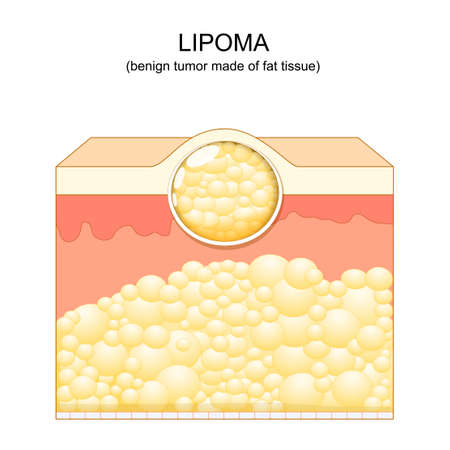1. Understanding Exfoliation and Its Importance in the UK Climate
If you live in the UK, you’ll know that our weather can be unpredictable — think brisk winds, drizzly rain, and those rare sunny spells. This ever-changing climate takes a real toll on your skin, often leaving it feeling dull, dry, or congested. That’s where exfoliation steps in as your skin’s secret weapon. By gently removing dead skin cells, exfoliation helps to keep your complexion fresh, smooth, and radiant whatever the weather throws at you.
In the colder months, central heating and biting winds can lead to flaky patches and rough texture. Come summer, increased humidity and SPF use might clog pores or leave skin looking lacklustre. Regular exfoliation is crucial for sloughing away these build-ups and encouraging healthy cell turnover. Not only does this reveal brighter skin underneath, but it also allows your moisturisers and serums to penetrate more effectively—so you get the most out of your skincare routine all year round.
For us in Britain, finding the right exfoliation method is about balance: you want to sweep away dead cells without over-stripping or irritating your skin’s barrier. Done properly, exfoliation helps maintain that sought-after healthy glow, no matter if it’s raining cats and dogs or you’re basking in a rare heatwave. Ready to discover how to exfoliate the British way? Let’s get glowing!
2. Choosing the Right Exfoliator: Physical vs Chemical Options
Finding your ideal exfoliator is all about understanding your skin type and the options available on the UK high street. Broadly, exfoliators fall into two categories: physical (manual scrubs) and chemical (AHAs and BHAs). Let’s break down the differences so you can shop smarter and treat your skin to a routine that truly works.
Physical Exfoliators: The Scrub Approach
Physical exfoliators use tiny granules or textured tools to manually buff away dead skin cells. Popular choices in the UK include sugar scrubs, salt scrubs, and gentle body brushes. If you’re shopping at Boots or Superdrug, look for brands like Sanctuary Spa or Soap & Glory for affordable, effective scrubs. However, those with sensitive or eczema-prone skin should opt for finer particles to avoid irritation.
Chemical Exfoliators: AHAs & BHAs Explained
Chemical exfoliants dissolve dead skin cells using active ingredients. AHAs (Alpha Hydroxy Acids) like glycolic or lactic acid are brilliant for dry or dull complexions as they hydrate while exfoliating. BHAs (Beta Hydroxy Acids), such as salicylic acid, penetrate deeper into pores—making them perfect for oily or blemish-prone skin. Ren Clean Skincare and The Ordinary are trusted British favourites for these formulas.
Quick Comparison Table: Physical vs Chemical Exfoliators
| Type | Key Ingredients/Tools | Best For | UK High-Street Picks |
|---|---|---|---|
| Physical | Sugar, Salt, Body Brushes | Normal/Combination Skin | Sanctuary Spa Body Scrub, Soap & Glory Scrub of Your Life |
| Chemical (AHA) | Glycolic Acid, Lactic Acid | Dry/Dull Skin | The Ordinary Glycolic Acid Toning Solution, REN Ready Steady Glow Daily AHA Tonic |
| Chemical (BHA) | Salicylic Acid | Oily/Blemish-Prone Skin | Nip+Fab Salicylic Fix, The Inkey List Beta Hydroxy Acid |
How to Choose Your Perfect Match?
If your skin feels rough or you prefer a quick fix in the shower, a physical scrub might suit you best. For long-term glow and if you struggle with ingrown hairs or breakouts, a chemical exfoliant is often more effective. Always patch test new products first—especially with actives—and adjust frequency based on how your skin responds. Remember: British weather can make skin more sensitive during colder months, so dial back exfoliation if you notice any redness or discomfort.

3. Preparing Your Skin: Pre-Exfoliation Care Essentials
If you want to achieve that radiant, healthy glow, proper skin preparation before exfoliating is a must—especially with the UK’s often unpredictable weather and urban pollutants. Here’s how to get your skin ready for exfoliation so you can make the most of every treatment.
Start with a Warm Shower
A warm (not hot!) shower is the perfect way to open up your pores and soften dead skin cells. This step helps loosen any dirt or debris on your body, allowing your chosen exfoliator to work more effectively. In the UK, where central heating and chilly winds can leave skin dry, this little ritual also helps lock in moisture. Take five to ten minutes under warm water before you begin.
Gentle Cleansing is Key
Before reaching for your scrub or mitt, cleanse your body using a mild, soap-free wash. Look for products labelled as gentle or hydrating—fragrance-free options are ideal for sensitive British complexions. Use circular motions with your hands or a soft cloth; avoid anything too abrasive at this stage. The aim is to remove surface grime without stripping away essential oils.
Skip Shaving – For Now
If you’re planning to shave, always do it after exfoliating rather than before. Exfoliating first removes dead skin cells and prevents ingrown hairs, giving you a closer, smoother shave later on.
Pat Dry – Don’t Rub
Once you’ve stepped out of the shower, gently pat your skin dry with a clean towel. Rubbing can cause micro-tears and irritation, especially if your skin is sensitive from the British climate or central heating.
Expert Tip:
For Londoners and city dwellers, consider an antioxidant-rich pre-exfoliation cleanser to help combat pollution build-up. This extra boost will ensure your exfoliation routine really goes the distance for healthier-looking skin.
4. Step-by-Step Guide: How to Exfoliate Your Body Effectively
Getting glowing, healthy skin isn’t just about the products you use—it’s also about applying the right techniques for every part of your body. Here’s a straightforward, British-friendly guide to exfoliating arms, legs, and back without irritation or patchiness. Whether you’re prepping for a summer holiday or simply want smoother skin under your jumpers, follow this step-by-step routine:
Step 1: Prepare Your Skin
Always start with warm water—either in the shower or bath. This helps to open your pores and soften dead skin cells, making exfoliation more effective. Make sure your skin is damp but not soaking wet before applying any exfoliant.
Step 2: Choose the Right Exfoliator
| Area | Recommended Type | Frequency (UK Climate) |
|---|---|---|
| Arms | Sugar scrub or gentle mitt | Once or twice a week |
| Legs | Salt scrub or dry brush | Twice a week |
| Back | Exfoliating brush with long handle | Once a week |
Step 3: Exfoliating Techniques by Area
Arms
Apply a small amount of exfoliant and use gentle circular motions from wrist to shoulder. Don’t forget elbows, as they tend to get rough. Rinse thoroughly with lukewarm water.
Legs
Start at the ankles and move upwards in small circles towards your thighs. Pay extra attention to knees and shins, where dry skin accumulates most during chilly UK months.
Back
If you struggle to reach your back, use an exfoliating brush with a long handle. Move it in sweeping motions from top to bottom. Alternatively, ask someone you trust for help—perfect for pamper nights in!
Step 4: Rinse and Pat Dry
Rinse off all residue using warm water. Avoid hot water as it can strip natural oils and increase sensitivity, especially important in colder British weather. Gently pat your skin dry with a soft towel rather than rubbing.
Step 5: Moisturise Immediately After Exfoliation
Your skin will be primed to absorb moisture after exfoliation. Apply a nourishing body lotion or cream—look for ingredients like shea butter or oat extract that are well-suited for the UK’s often damp and brisk conditions.
Quick Tips for Even Exfoliation Without Irritation:
- Avoid over-exfoliating; stick to the recommended frequency.
- If your skin feels sore or looks red, take longer breaks between sessions.
- Switch to fragrance-free products if you have sensitive skin.
- Never exfoliate broken, sunburnt, or freshly shaved skin.
This simple tutorial will help you achieve smoother, healthier-looking skin all year round—no matter what the British weather throws at you!
5. Aftercare: Locking in Moisture and Protecting Your Skin
After exfoliating, your skin is at its most receptive—soft, smooth, but also more vulnerable to the elements. That’s why aftercare is crucial, especially when facing the unpredictable British weather. Let’s uncover some of the best ways to lock in moisture and keep your skin protected all year round.
Choose the Right Moisturiser for UK Conditions
The UK climate swings from damp and chilly to dry and centrally-heated indoors, which can leave skin feeling tight or dehydrated. Opt for a rich, nourishing cream or body butter if you have dry or mature skin—look for ingredients like shea butter, ceramides, or oat extract. For normal or combination skin, a lighter lotion with hyaluronic acid or glycerin will offer hydration without heaviness. British favourites include Neal’s Yard Remedies Wild Rose Body Lotion and Cow Shed Refresh Body Lotion, both formulated to suit the local climate and lifestyle.
Top Tip:
Apply your moisturiser while your skin is still slightly damp from the shower. This helps seal in extra hydration and leaves your skin feeling plumper for longer.
Layering for Extra Protection
If you’re heading outdoors, especially during colder months or on blustery days, consider layering a barrier balm over drier areas like elbows and knees. Products containing lanolin or squalane are brilliant at shielding skin from windburn and environmental stressors common in Britain’s ever-changing weather.
Don’t Forget Sun Protection
Even on cloudy days, UV rays can penetrate through, so finish your routine with a broad-spectrum SPF 30+ on any exposed areas. Many modern British moisturisers now come with added SPF, making it easier than ever to incorporate this step into your daily routine without an extra product.
Your British Aftercare Routine Recap:
- Moisturise immediately after exfoliation
- Choose products suited to your skin type and local climate
- Add a protective balm for extra defence against the weather
- Use SPF daily—even when it’s cloudy
With these aftercare habits and homegrown product picks, you’ll keep your freshly exfoliated skin looking radiant, healthy, and resilient—no matter what the great British weather brings!
6. How Often Should You Exfoliate? Setting Your Routine for UK Skin
Getting your exfoliation frequency right is crucial, especially with the UK’s ever-changing weather and busy lifestyle. Over-exfoliating can leave your skin feeling sensitive, while too little may lead to dullness and clogged pores. So, how do you strike the perfect balance?
Understanding Your Lifestyle: Commute, Sports & Daily Grind
If you commute daily—whether it’s on the London Underground or cycling through city streets—you’ll know just how much pollution and grime your skin picks up. For most people, exfoliating 1-2 times a week is sufficient to keep skin fresh without stripping it. However, if you’re active in sports or fitness (hello, Saturday park runs or after-work HIIT sessions), sweat and dirt can accumulate more quickly. In these cases, aim for two gentle exfoliations per week, focusing on areas like the back, chest, and arms.
Seasonal Adjustments: British Weather Considerations
The UK’s unpredictable climate means your routine should change with the seasons. In winter, central heating and cold winds can dry out skin, so opt for a milder exfoliant once a week and follow up with a rich moisturiser. During summer—when humidity rises and you’re more likely to bare some skin—twice weekly exfoliation helps prevent clogged pores from sweat and SPF build-up.
Listen to Your Skin
No matter the recommendations, pay attention to how your skin responds. If you notice redness or sensitivity, cut back and give your skin extra hydration. If your complexion looks lacklustre or rough, it might be time to increase exfoliation slightly—always choosing products suitable for your skin type.
Setting Your Exfoliation Routine
For best results, choose a day or two each week that fits easily into your schedule—perhaps Sunday evenings to prep for the week ahead or midweek as a pick-me-up. Consistency is key; regular gentle exfoliation will help keep your skin healthy and glowing all year round in the UK.

